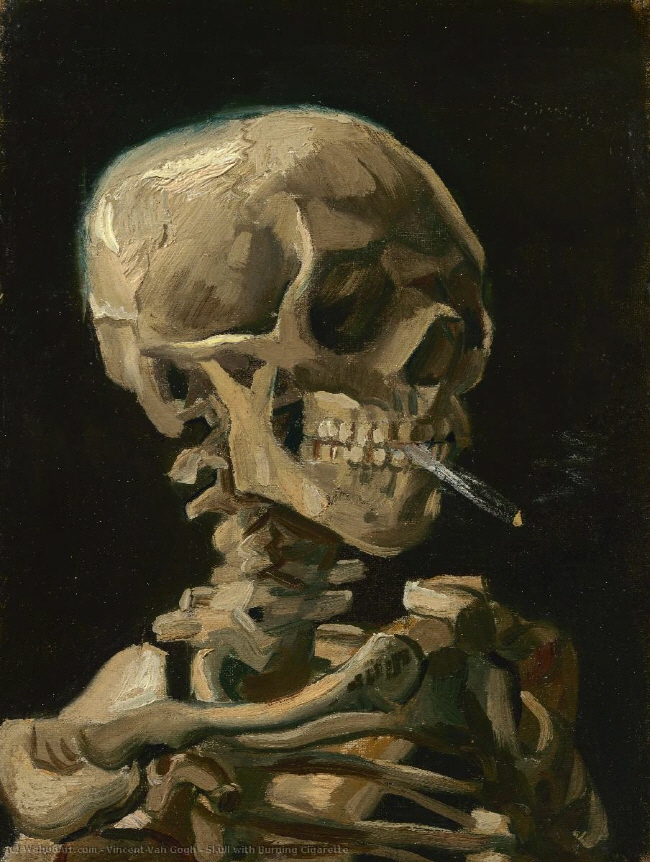
   |
[Misc] (Top 100 Paintings - 079) Skull with Burning Cigarette by Vincent Van Gogh
최고관리자 | 21-04-10 00:46

(1) "Write 2 Speak 전체 목록 & 모든 콘텐츠"를 보시려면 "Write 2 Speak = 유튜브 채널"에
가입(subscribe - 클릭)후 "본인의 유튜브 ID & Write2Speak 등록 ID"를 "write2speak@daum.net"로
이메일로 보내 주시면 확인 후 본 사이트 정회원으로 등급됩니다. 많은 신청 기다리겠습니다.
(2) 참고로, "Write 2 Speak"에 올라오는 유튜브 contents는 정기적으로 삭제가 되며, "전체 내용"을 보시려면
위에 절차를 따라야만 "Write 2 Speak -> 자료실(클릭)"영역에서 모든 내용을 다시 볼 수 있습니다.
****************************************************************************************
Skull with Burning Cigarette by Vincent Van Gogh
No doubt one of Van Gogh's most macabre works, Skull with Burning Cigarette is probably the most distinguished of his paintings from the Antwerp period.
It's likely that the work was painted from a skeleton in an anatomy class while Vincent was studying art. A sketch, Hanging Skeleton and Cat, from the same period would appear to confirm this. The work--a stark momento mori--was produced in a time when Van Gogh's health was poor (due to stomach ailments and rotting teeth) and may reflect Vincent's own concerns about his state of well-being. Some interpret the work as being a statement of defiance against Vincent's faltering health.
This disturbing painting may have been influenced by the similar macabre works produced by the Belgian artist Félicien Rops. It's known that Vincent owned a copy of Rops' Uilenspiegel, a satirical arts journal and the work of Rops (shown at right), The Husbands' Train: The Death of the Sinner, suggests a clear influence on Vincent's own two skull and skeleton works cited here.
Van Gogh may also have been influenced by one of his own countrymen, the 17th century Dutch artist, Hercules Segers, who also produced a disturbing work of a skull. It remains uncertain whether Van Gogh was aware of Segers' works, but he did, of course, have a thorough knowledge of Dutch painters throughout the 17th to 19th centuries.
   |




